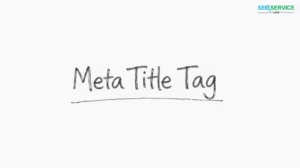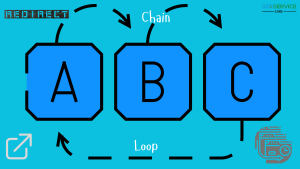Your website’s organic traffic can be affected by how well you understand keyword placement in SEO. If you are starting with search engine optimization or need to fine-tune your approach, it is crucial to master effective methods of placing keywords that will help you achieve higher rankings and get more traffic to your site. This guide covers everything you need about strategic keyword placement to maximize your SEO efforts.
Importance of Keyword Placement
How Search Engines Analyze Keywords
Search engines analyze the keywords by considering their relevance to the search query, contextual use within content, and user intent. They prioritize understanding how well keywords match the overall topic and intent of the page rather than just their frequency.
Why Placement Matters More Than Density
Keywords placed strategically, such as titles, headings, and early paragraphs, are important because they indicate relevance to search engines and users. Such a position helps search engines quickly ascertain what a particular piece of content is all about and may influence rankings more than keyword density alone.
Optimal Locations for Keyword Placement
Optimal placement of keywords is crucial for SEO effectiveness:
In Title Tags:
Keywords should also be included in title tags because they convey clear messages about the topics covered in them. It is important that they contain relevant search terms for them to rank higher on the search results page. Putting the keyword at the beginning of this tag would strengthen its weight.
Within Meta Descriptions:
Though not a direct ranking factor, meta descriptions influence click-through rates (CTR) from search engine results. Including keywords naturally within meta descriptions helps search engines understand the page’s context and encourages users to click through to your website. This strategic placement effectively supports both SEO and user engagement goals.
Practical Examples and Best Practices
Sure! Let’s take a look at some real-life examples and best practices in keyword placement:
Practical Examples and Best Practices
1. In Title Tags:
Example: “Best SEO Service In 2024 | SEO Service Care”
Best Practice: Start with the most important keywords with the heaviest impact.
2. Within Meta Descriptions:
Example: “Discover top-rated SEO Service for your business needs.”
Best Practice: Create natural combinations of words to encourage more clicks without stuffing them too much.
3. Throughout Content Body:
Example: “Our SEO Service ensures top rankings with tailored strategies.”
Best Practice: Use alternative versions of keywords all over the content for contextuality.
4. In Headings and Subheadings:
Example: “SEO Service Care: Your Trusted SEO Partner”
Best Practice: In corporate key phrases into headings for readers and search engines.
5. In Image Alt Text:
Example: “SEO Service Care logo – Trusted SEO services since 2020.”
Best Practice: Incorporate descriptive keywords into alt text for accessibility and optimization.
6. In URL Structures:
Example: https://seoservicecare.com/local-seo-services/
Best practice: Keep URLs brief by using related keywords to enhance clarity.
Using Keywords in Headers (H1, H2, H3)
Structuring Content for Maximum Impact:
Headers (H1, H2, H3) are vital in organizing and making SEO-friendly content. Here is how you can use them well:
1. H1 (Main Heading):
Example: “SEO Service Care: Enhancing Your Online Presence”
Best Practice: Use primary keywords that capture the main topic or theme of the page. It should be clear and relevant to both users and search engines.
2. H2 (Subheadings):
Example: “Why Choose SEO Service Care?”
Best Practice: Incorporate variations of primary and related keywords. Each H2 should focus on your main topic’s specific aspect or benefit.
3. H3 (Sub-subheadings):
Example: “Expertise in SEO Strategy”
Best Practice: Use specific keywords or long-tail variations that provide detailed insights or solutions within each section.
4. Structuring for Readability and SEO:
Ensure headers follow a logical hierarchy, guiding readers through the content while signaling key information to search engines. Avoid keyword stuffing and maintain natural language flow to enhance user experience.
Keyword Placement in Content
Opening and Closing Paragraphs:
Write a strong opening paragraph with your main keyword included to establish relevance. By doing this, search engines will be able to know what the page is about at first glance. In the last paragraph, reiterate the keyword to summarize the main points and give a solid conclusion.
Naturally Within Body Content:
Use related keywords and their variations uniformly in the body content. This will maintain readability and make the content sound natural. Avoid using too many keywords (keyword stuffing), which obliterates readability and SEO efforts. Focus on the user intent by providing useful information while smoothly including relevant keywords.
Avoiding Keyword Stuffing
Keyword stuffing is using keywords in the content to the extent that it compromises quality and readability. Instead, natural integration, relevant context, and readability should be emphasized to improve user experience and ensure search engine compliance.
Using Synonyms and LSI Keywords
The use of synonyms and Latent Semantic Indexing (LSI) keywords enriches web content through diversification of vocabulary and contextual reinforcement of the main topics. This helps improve readability and relevance, thus aligning with search engine algorithms that rank results based on natural language usage and user intent for better SEO performance.
Advanced Techniques for Keyword Placement
Semantic Search and Contextual Relevance
Apply semantic search to ensure that the keywords match the user’s intent. Synonyms and related words should be included naturally in the text. You can also refine your keyword choices using Google’s NLP API, basing them on contextual relevance for improved SEO results.
Optimizing Voice Search
Keywords should be optimized to cater to natural language queries. Focus on long-tail keywords and phrases that individuals use when they perform spoken searches. Add conversational tones to your articles and provide direct answers to common questions to capture voice trends like Siri, Alexa, or Google Assistant.
Adjusting Keyword Strategies Based on Trends
Keep updated on keyword trends using tools such as Google Trends plus industry-specific analytics. Adjust your keyword strategies according to seasonal shifts, emerging topics, and changing consumer behavior. For example, updating content regularly using trending keywords will enable you to maintain relevance and attract organic traffic in dynamic search landscapes.
Internal and External Linking
For SEO purposes, you can link internally and externally. On the inside, guide users and search engines through your website by linking to other related materials using descriptive anchor text. On the outside of it, link to reliable sources that provide additional value, thereby creating a sense of authority and improving the general credibility of your site.
Leveraging Anchor Text for SEO
Improve the anchor texts by incorporating relevant keywords to describe linked information. Use synonyms to omit repetitions, making the whole text sound natural. Ensure that there is a variety in anchor texts while still following SEO guidelines so that user experience can be improved across various interconnected website pages, which search engines will also have visibility into.
Tools and Resources for Keyword Placement
SEO Software Solutions
SEO software solutions are bundles of tools that help you interpret, enhance and watch over your keyword placement strategies. They offer insights into the performance of keywords to aid in effective keyword usage.
Keyword Research Tools
Relevant keywords can be sourced through keyword research tools, and their search volumes and competitions are well understood. These instruments assist you in discovering the most impactful keywords for your SEO strategy.
Free vs. Paid Options
There are free and paid versions of these tools, each with its own merits. Free tools offer basic functionality, while paid options offer additional features such as deep analysis, competitor tracking, and comprehensive reporting.
Success Tracking Analytics
Analytics tools are vital in tracking the effectiveness of your efforts to place your keywords. These provide details regarding user behavior, sources of traffic, and keyword performance, allowing you to gauge the efficiency of your search engine optimization activities.
Evaluation and Flexibility
Monitoring keyword performance regularly will enable you to modify your strategy for better outcomes. Use analytics data to find areas where you can improve and perfect this approach to achieve consistent SEO success.
Conclusion
Mastering keyword placement is an ongoing process that requires continuous learning and adaptation. Placing your keywords strategically while keeping up with SEO trends could boost organic traffic significantly and increase your website’s visibility. Remember, blending keywords naturally within high-quality content that gives value to readership and satisfies search engine algorithms is significant.
FAQ
How is the placement of keywords carried out in SEO?
Keyword placement in SEO means strategically inserting relevant keywords into different parts of your website content, such as titles, meta descriptions, headers, and body text, to enhance visibility and search engine rankings.
What impact do keywords have on a website’s rank?
Keywords affect your web page’s ranking by making it easier for search engines to understand what your pages are about. Placing your keywords correctly ensures that your content matches user queries, thus raising your chances of getting better rankings in searches.
What does the LSI keyword mean?
LSI (Latent Semantic Indexing) keywords are secondary words related to your main one. They provide search engines with a better understanding of what is talked about and done on the pages, hence improving relevance and quality of content.
Can keyword stuffing harm my SEO?
Stuffing keywords can help SEO efforts. Overusing these phrases can provoke penalties from online platforms, which will deem the texts spammy rather than useful or enjoyable for their consumers.
How frequently should my keyword strategy be updated?
It is important to update your keyword strategy occasionally, at least quarterly, to remain current on search trends, user behavior, and industry trends; you can also monitor performance data.
Which tools can help with keyword placement?
Almost all the tools include Google Keyword Planner, SEMrush, Ahrefs, and Moz, which are helpful for keyword placement as they indicate how keywords are fairing, their search volumes, competition levels, and optimization opportunities available.
Is voice search impacting keyword placement?
Yes, voice search is impacting where our target keywords are placed. Optimizing for natural language and question-based keywords has become more important as voice search queries are longer and more conversational.
What is semantic search and why is it important?
What does contextual meaning mean? Semantic searches aim to understand what a user wants to know from a query rather than just typing in words. They help improve the relevance of searches, giving users more accurate, meaningful information.






